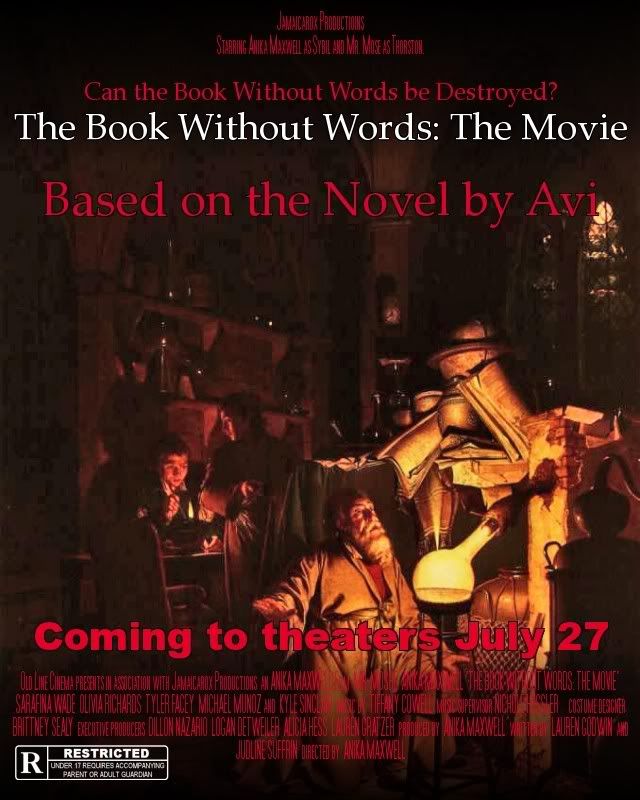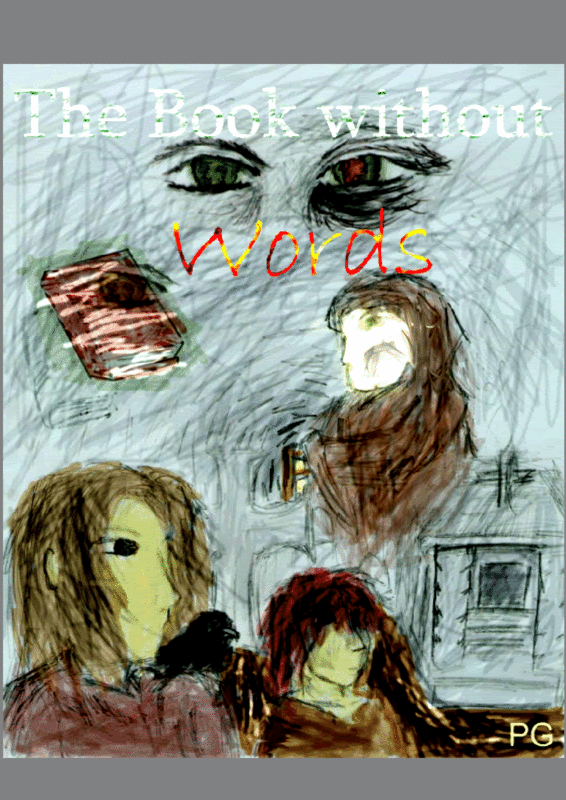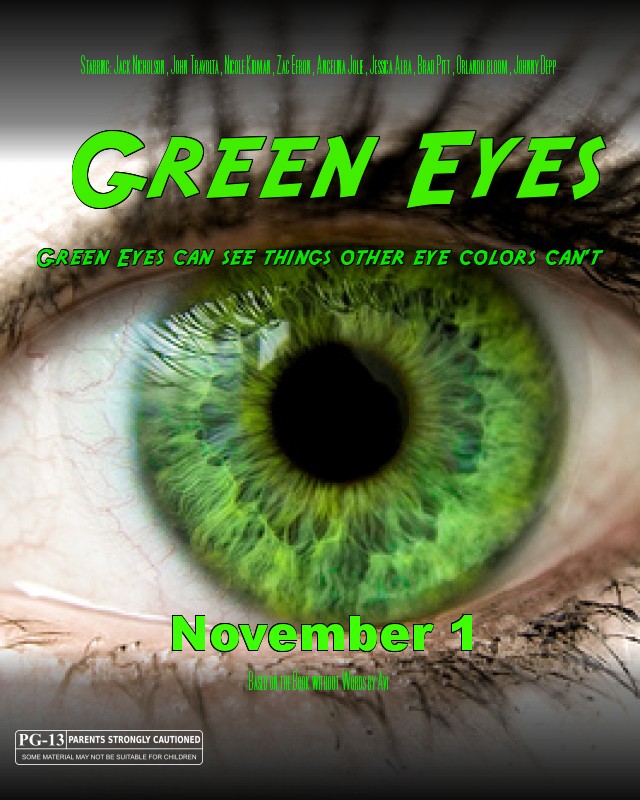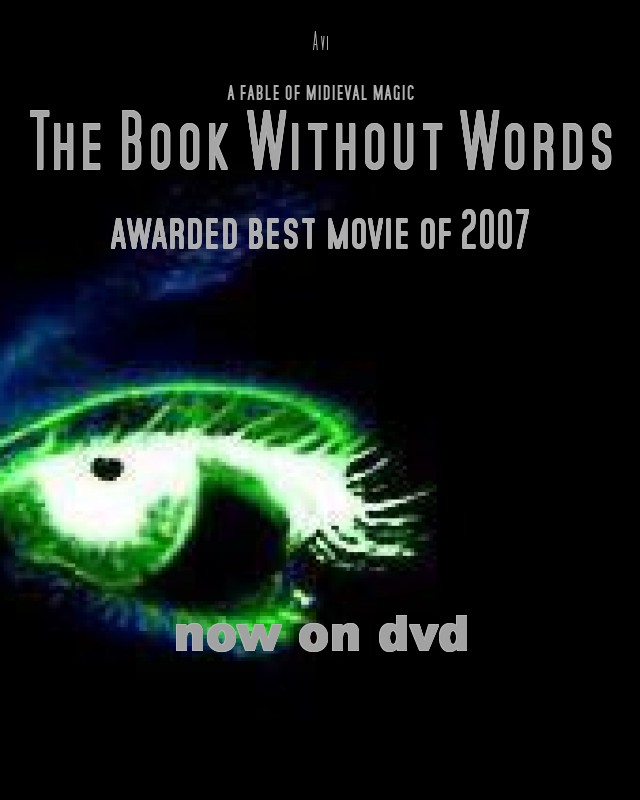Project Explanations & Samples
Below you will find an incomplete list of FINAL PROJECT OPTIONS. These can be used to show complete and thorough understanding and mastery at any point of study for full informal credit, whatever “full informal credit” means. I guess it could mean anything depending on whose autonomous classroom you’re in, eh?
THIS PART IS IMPORTANT!!!!! Your completed project must show achievement of full mastery and you must test for full mastery in order to be considered for full credit.
For instance, if you want to do a project for a vocabulary list, and all you do is a Word Search, you can not get full credit. The word ALONE is not all the project is supposed to deal with. Get it?
There are other sites/pages out there on the Wide World of Web that list options with no description; if you find something listed on another site that you would like to use to show mastery, you will have to get my approval for its use. I will from time to time specifically assign one (or more) of the project(s) on this page.
This page is the resource for you to use concerning the specifics of any assignment covered here.
Some include rubrics, while others do not.
TV Commercial, Cinema Style Preview/Trailer, Book Trailer, Storyboard or Movie Trailer – Individual or Group
- Pretend that you turned one of the stories you’ve read into a movie. Your task fo rthis project is to create a trailer/preview that a person might see on TV or at the cinema to will advertise your film. This may be presented as a trailer, or as a storyboard, or as a power point. Be creative
- You will have to provide proof of the writing/creative process: Brainstorming/Ideas generation, Rough Drafting, Proof/Editing, FInal Drafting.
- What you will turn in:
- A finished movie trailer based on one of our stories. May be in many formats.
- You may want to look up movie trailers on Yahoo Kids as well as some of the tools on Wikispaces Getreal.
Radio Play or Other Performance – Individual or Group
- Radio Play Performance Assignment: With a small group, create a radio play version of one of the stories from the unit of study. Highlight the dialogue and narrative sections of each story. Decide who will play each character and who will provide the sound effects. Be sure to incorporate sound effects appropriate to the scene. Then, perform the radio play for the class. You may choose to convert an existing section into a radio play, or you may create a brand new (lost, deleted, director’s cut added, etc.) scene.
- You will have to provide proof of the writing/creative process: Brainstorming/Ideas generation, Rough Drafting, Proof/Editing, FInal Drafting.
- What you will turn in.
- A neatly written/typed script that incorporates dialogue and sound effects. You will need to highlight each of these elements in a different color.
- You will perform the radio play for the class for part of your grade for this assignment. It should be at least 2 minutes long, but no longer than 4 minutes.
- Stage Performance Assignment: With a small group, create a scene based on one of the stories/poems we’ve read. Write a scene and perform it for the class.
- You will have to provide proof of the writing process.
- What you will turn in:
- A completed script neatly written or typed that incorporates dialogue, stage directions. You will need to highlight these elements in different colors.
- You will perform your scene for the class as part of the grade. It should be at least 2 minutes long, but no longer than 4 minutes.
Book Cover/Jacket Review – Individual
- Write a book review and incorporate it into a book jacket based on one of the stories in the unit of study. It should be colorful and look professional, as well as state your opinion on the book/story/poem/etc. and why others should/should not read it. You will have to provide proof of the writing/creative process.
- What you will turn in: A complete book jacket based on one of the stories we’ve read.
- Front Cover—title, author, student name, and an illustration depicting the story.
- Back Cover—two reviews of the story. You may either find a review of the story that someone else wrote, or write two yourself from different perspectives (ex. one thinks you should read it, another thinks the characters are interesting).
- Inside Right Flap—small photo or drawing of the author, the author’s name and a short biography.
- Inside Left Flap—contains a summary of the short story. DO NOT give away the ending – hook the reader. If you do, you do not get credit for the assignment.
- Spine—contains the title, image for publishing company, and the author’s last name.
- What you will turn in: A complete book jacket based on one of the stories we’ve read.
The Comic Strip/Book – Individual or Group (Max 3 people)
- Take a favorite scene, chapter from the novel, or the entire piece. Then create a comic depicting it.
- Comic Strip – 1 Person
- Comic Book – 1-3 People
- You can choose to create this on paper (using pencil, pen, markers, crayons, etc.), you can use software such as Comic Life, or Comic Book Creator.
If you decide to create:
- A scene – 9 panels on one page.
- A chapter – 1-5 Pages
- A Book – 15+/- Pages
You will have to provide proof of the writing/creative process, and you can turn in:
- a paper copy of the comic
- a PDF copy of the comic
Editorial Cartoon – Individual
- a type of cartoon that has a social or political message. Even though your cartoon may only have 1-2 frames, it should present a message to the reader and be thematically connected to one of the stories from the unit of study. For help with this kind of cartoon, go to __link and assignment are under construction__.
The Character Interview – Individual or Pair
- Pick a character from unit of study. Sit down and conduct an interview. Your interview should be a minimum of 7 questions and should incorporate the journalists formulaic question words to start. You should extend from there. Your interview should be conducted after an important scene or event.
- What you will/can turn in:
- a typed paper copy of your interview,
- a word document or PDF file, or
- an audio (MP3) recording of the interview (I suggest a program called Audacity) **EXTRA CREDIT**
- a video production of the interview **EXTRA CREDIT**
- What you will/can turn in:
Theme-centered Collage – Individual
- Create a collage incorporating themes, metaphors, imagery, symbols, or characters in the selections from the unit of study. A collage can be defined as “a technique of composing a work of art by pasting on a single surface various materials not normally associated with one another, such as newspaper clippings, parts of photographs, theater tickets, and fragments of an envelope.” But it can also be described as “a film that presents a series of seemingly unrelated scenes or images or shifts from one scene or image to another suddenly and without transition” (Dictionary.com).
- You may use any of the definitions above to design and create your collage.
- What you will turn in: A finished collage based on the stories in Unit 4.
Poster Board – Individual
- Follow the link below to the Penn Harris Madison Poster and Display Board Tips page.
Persuasive Essay—Moral Argument
- Morals state the main message or lesson one is supposed to have learned after reading or interacting with a piece of artwork be it written, stage performed, painted, whatever; for instance, the idea that people should be careful of what they wish for, as they might get their wish in the stories “The Third Wish” and “The Monkey’s Paw”.
- Your challenge is this: Argue that the moral in the piece is poor advice and should be ignored.
- You will create an organized argument. You will have to provide proof that you have taken this through the writing process. This will go in your cumulative writing portfolio.
- What you will turn in: A neatly written or typed 5 paragraph essay with a clear position statement, evidence and support of that position, and a conclusion.
Alternate Ending/Version to the Novel/Selection – Individual Activity
- Here is your chance to write a different ending/version for the story/novel.
- For your ending/version you must:
- track back to some point
- write at least 300 words
Poetry Collection – Individual
- Theme Centered Poetry Portfolio Project
- Before you begin, read the Poetry Portfolio Project Suggested Reading.
Diorama – Individual (Taken from eHow.com)
- Things You’ll Need:Cardboard Boxes Or Other Container, Dollhouse Dolls, Miniature Animals, Miniature Trees, Shoeboxes, Hobby Paintbrushes, Miniatures (Animals, Foodstuffs, Vegetation and/or Building Elements), Modeling Clays, Poster Paints, Glues Or Putty, Acrylic Paints Or Paper For Backdrop.
- Following is the suggested process to go through in order to create your Diorama.
- Decide on a scale. This is key, because a diorama becomes believable to the extent that it looks “real.” If you’ve got a focus (a Barbie doll, a particular plastic dinosaur), use that scale. If not, try 1 foot to 1 inch–that’s standard for classic miniatures and doll houses.
- Collect your materials–human and/or animal figures, palm trees or sugar cubes to build an igloo, or doll house furniture and miniature foods for an interior scene.
- Decide on a background–you can paint or draw your own or use wallpaper or wrapping paper or anything else you can find. Remember, though, that the background images should be consistent with the scale you’ve chosen.
- Choose a container. Many children’s school projects use cardboard boxes or shoe boxes, but you can use just about anything. It should be light but fairly sturdy, especially if you will need to move the diorama around.
- Build your diorama working from the back to the front. Start with the background by creating a horizon and sky/ceiling and ground/floor. Then place large objects such as trees. The smallest objects should be placed the closest to the front. Use glue or putty to secure the objects.
The Movie Poster w/ Warning Label – Individual Activity
- Imagine you are an artist working in Hollywood. Your job is to create the movie poster for an upcoming smash hit “Insert the name of your novel/short story/narrative poem.
- The movie poster will need to include at minimum the following information:
- title of the movie
- the text “based on the novel, “TITLE HERE” by “AUTHOR NAME HERE”
- the release date
- the names of the two main actors in the movie and
- a movie rating
- You may create this poster manually or use any software application you wish to use. I must alert you, though, to the fact that there is an excellent tool available online at Big Huge Labs.
- Check out some sample movie posters at the bottom of this page.
Website or Webpage – I suggest using edublogs.org (I do).
- Your website/page must accomplish the same thing as a Display Board, Diorama, Expository Piece of writing
Educational Game – Inidividual or Group (Max 3)
- You are a game inventor working for MosheBro Toys. For this project you must create a game that is built around the central theme or conflict of the story/novel/poem you are creating it for. The game must be COMPLETELY CREATED including all game parts, rules, packaging. When you are done, it should look like you got it from a retail store (well, to the best of your ability).
- Your game can be modeled after a well known established game such as (but not limited to):
- Jeopardy (I have powerpoint templates for this one)
- Wheel of Fortune
- Who wants to be a _______________ ?
- Are you Smarter Than Who/What?
- The Weakest Link (or The Strongest Brick
- You make up a name, go ahead.
- Whose _____________ Is It Anyway
- Monopoly
- Candy Land
- Chutes and Ladders
- Boggle
- and the list goes on and on and on . . .
- Brochure – Individual
- Other Activities
- Send in your suggestions as comments to this page . . . . . . . . . . .






